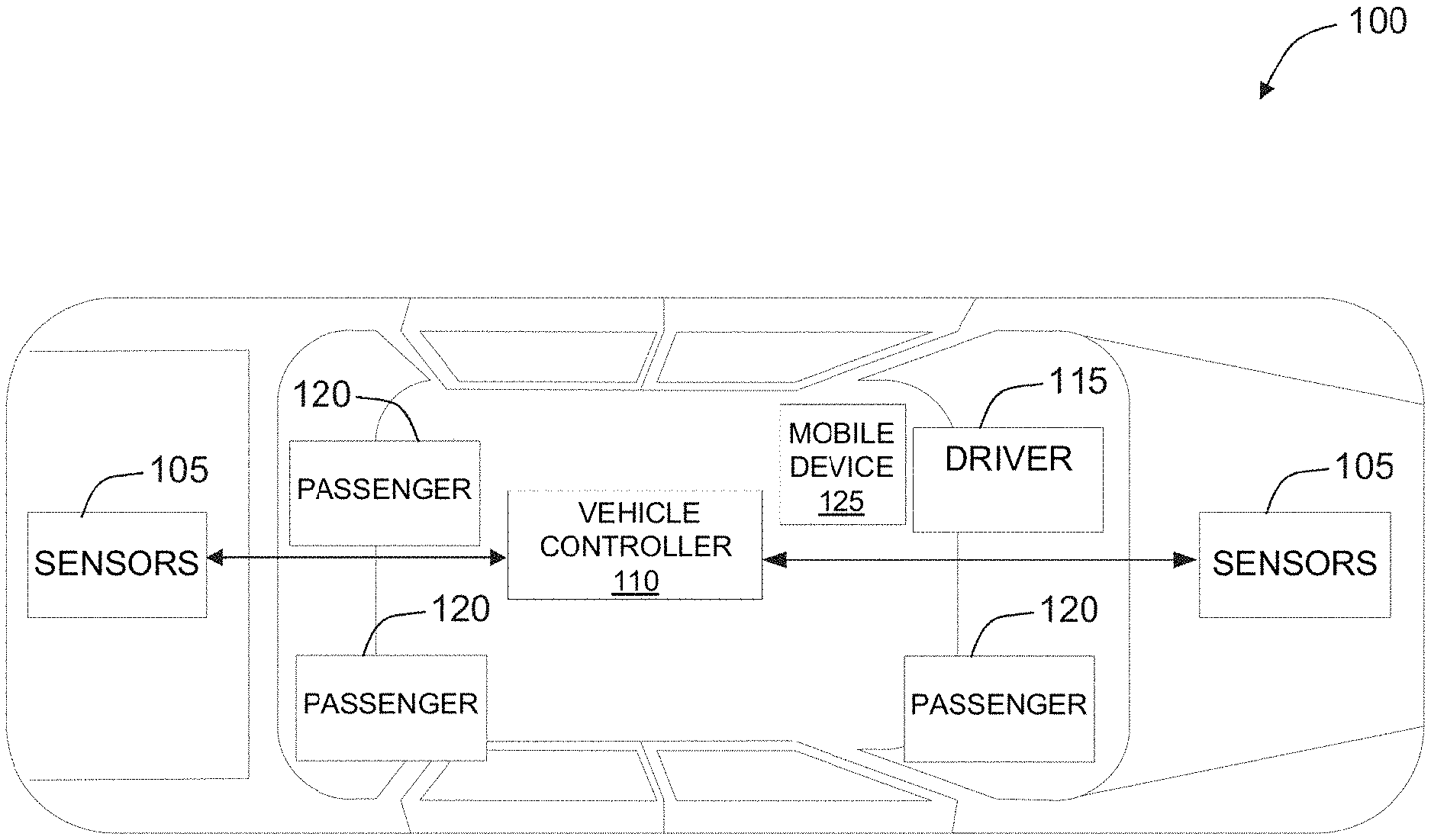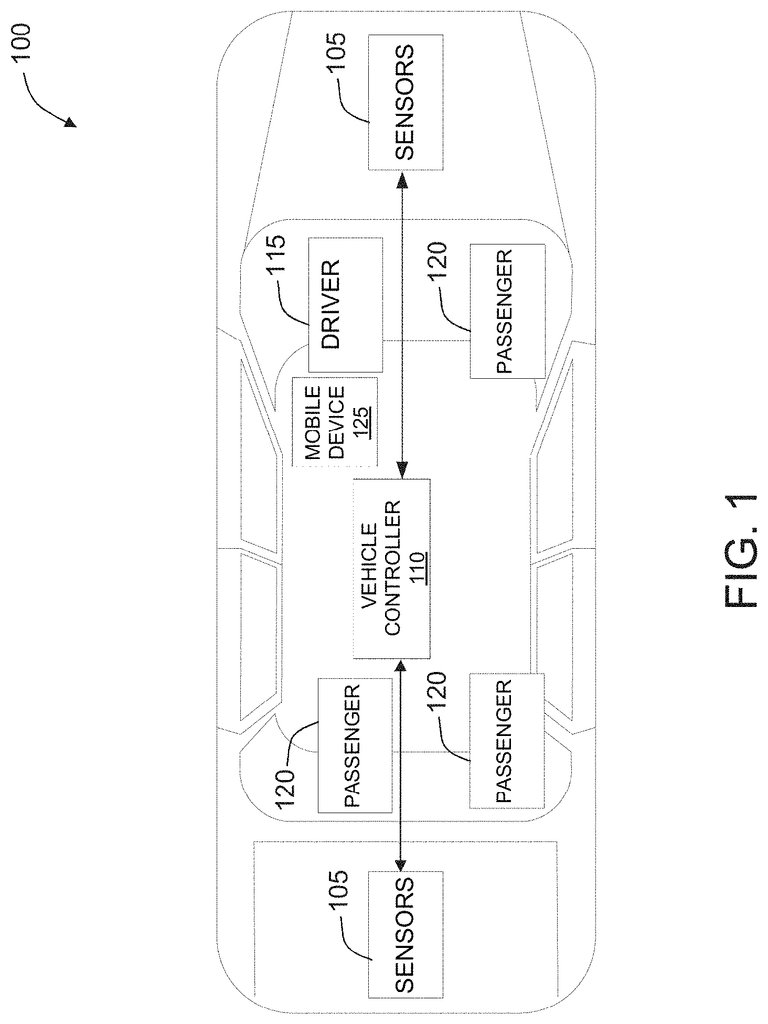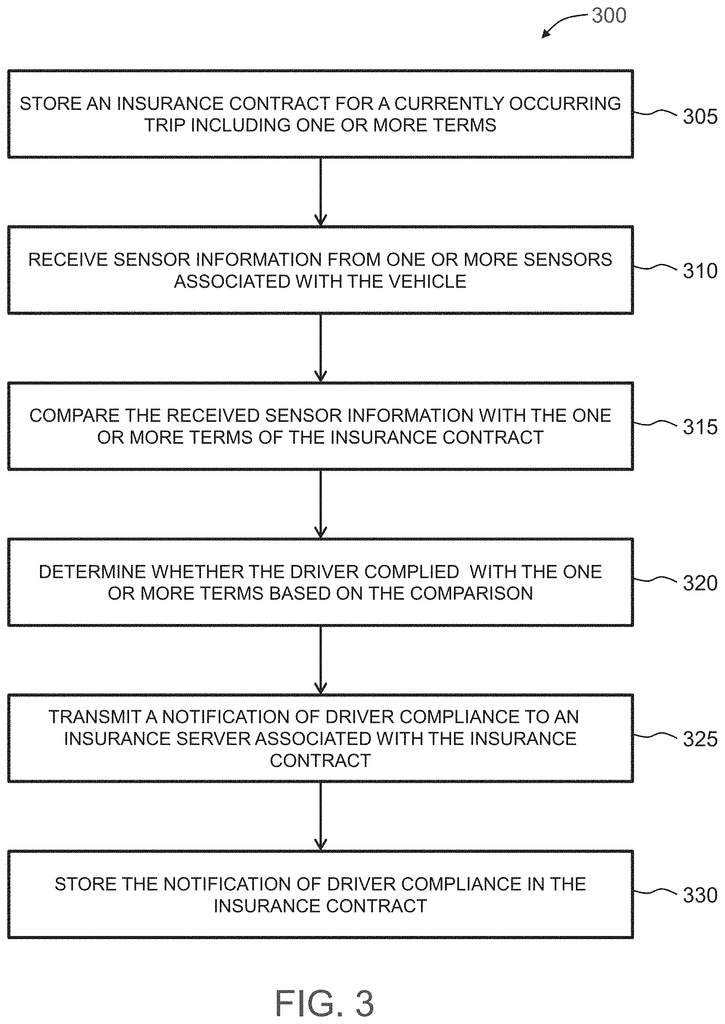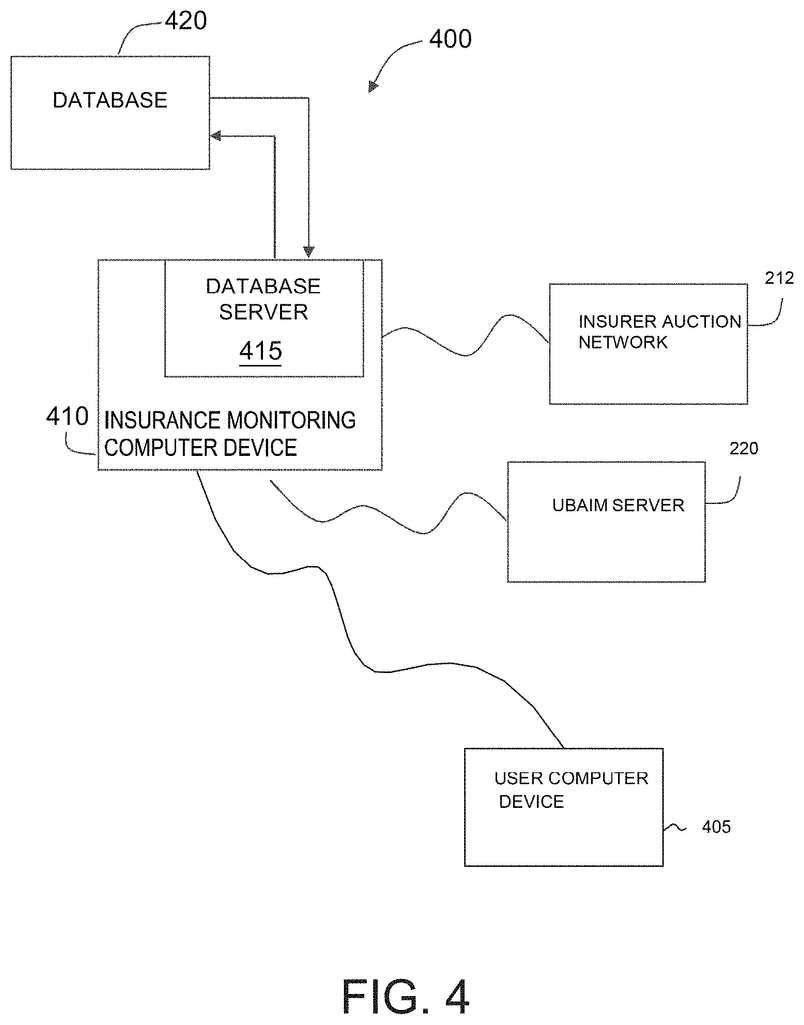Invented by Matthew L. Floyd, State Farm Mutual Automobile Insurance Co
Traditionally, car insurance policies have been based on fixed premiums, which do not take into account individual driving habits and behaviors. This one-size-fits-all approach often results in higher premiums for safe drivers who are penalized for the actions of high-risk drivers. However, with the advent of usage-based car insurance, insurers can now offer more tailored coverage based on actual driving data.
Blockchain technology plays a crucial role in this market by providing a secure and transparent platform for insurers to access and analyze driving data. By using blockchain, insurers can ensure the integrity and accuracy of the data, eliminating the need for intermediaries and reducing the risk of fraud. This decentralized approach also allows for multiple carriers to participate in an auction to provide the best coverage and rates for policyholders.
The multiple-carrier auction system works by allowing insurers to bid on providing coverage based on the driving data of policyholders. This competition among carriers ensures that policyholders receive the most competitive rates and coverage options. The blockchain technology ensures that the bidding process is fair and transparent, with all bids recorded and accessible to both insurers and policyholders.
For insurers, this market offers several advantages. Firstly, it allows them to better assess risk by analyzing individual driving behavior. This data-driven approach enables insurers to offer lower premiums to safe drivers, incentivizing responsible driving habits. Additionally, the multiple-carrier auction system encourages competition, leading to more competitive rates and better coverage options for policyholders.
Policyholders also benefit from this market. By opting for usage-based car insurance, they have the opportunity to save money on premiums. Safe drivers who have a proven track record of responsible driving can enjoy significantly lower rates compared to traditional fixed premium policies. Furthermore, policyholders have the flexibility to choose from multiple carriers, ensuring they find the coverage that best suits their needs and budget.
The market for blockchain-controlled multiple-carrier auction for usage-based car insurance is still in its early stages, but it has the potential to revolutionize the insurance industry. As more insurers and policyholders recognize the benefits of this innovative approach, we can expect to see a significant shift towards usage-based car insurance in the coming years.
However, there are challenges that need to be addressed for widespread adoption. One of the main challenges is ensuring the privacy and security of driving data. Policyholders need to have confidence that their personal information is protected and used only for insurance purposes. Additionally, there is a need for standardized data collection methods and metrics to ensure consistency across different carriers and policies.
In conclusion, the market for blockchain-controlled multiple-carrier auction for usage-based car insurance is a promising development in the insurance industry. This innovative approach offers personalized coverage, lower premiums for safe drivers, and increased competition among insurers. As the technology continues to evolve and address privacy concerns, we can expect to see a significant shift towards this data-driven and customer-centric model of car insurance.
The State Farm Mutual Automobile Insurance Co invention works as follows
The system is designed to generate and manage usage-based contracts by using blockchains. It includes clauses, terms and conditions (e.g. mileage limits, restrictions on autonomous vehicle operation) and can be configured to: (i) store a contract of insurance for a trip that has already occurred or will occur, in which the contract contains insurance for the driver, the passenger and/or the vehicle, (ii) receive alterations to the contract from the driver and/or (autonomous) vehicle, (iii) transmit The insurance contract is stored in a blockchain, with multiple nodes storing copies.
Background for Blockchain controlled multiple-carrier auction for usage-based car insurance
Usage based insurance contracts” (also called trip based insurance), are short-term agreements that allow drivers to pay insurance only when they need it. This insurance is often based on the combination of the driver and the vehicle. As many drivers no longer have a specific vehicle, it is more difficult to determine which insurance policy best suits the user. While usage-based insurance may have restrictions for the user, it’s not always possible to tell when they have complied. A user may want to change the insurance policy to accommodate a side trip or detour. It is necessary to collect data on a user or a trip in order to track insurance policies.
The present embodiments can relate to blockchain-based systems and methods of managing usage-based contracts. The platform can include an Insurance Monitoring Computer System (IM) associated with a car, a User Based Auto Insurance Management system (?UBAIM?) The platform may include an Insurance Monitoring (IM) computer system associated with a vehicle, a User Based Auto Insurance Management (?UBAIM?) The IM computer may be a device that is associated with a driver or a vehicle. In other embodiments, the IM system can be a separate device from the vehicle that is in communication with it.
The The The In The The
The The The The
The system can (xxii), determine whether the vehicle and/or driver (such as an autonomous vehicle) comply with one or more of the terms based on the comparison. (xxiii), if the determination of compliance is that the vehicle and/or driver complied, the computer device may be further configured to (a) transmit the notification of compliance of the driver to an insurance server that is associated with the contract of insurance; or (b) create a block based on the notification; or (c) save the notification in the (electr
The system can also or instead: (xxiii), determine whether the vehicle and/or driver (e.g. an autonomous vehicle), is approaching a predetermined threshold for violating one of more terms, based on the comparison. (xxiii), if it is determined that the vehicle operations by the driver or vehicle itself (e.g. autonomous vehicle), is approaching one or more of the terms (or limits to vehicle operation), then the computer device may be further configured to: a) transmit a notification or warning to the The computing device can include more, less or alternative functionality, such as that described elsewhere.
At the very least, this system has the advantage that, because it receives the telematics data from the vehicle while on the road, the computer device can analyze the data with the driver?s consent or with affirmative consent, (such as opting in to an insurance reward program), to accurately determine whether the driver has adhered to the insurance terms during the journey and be able report that compliance to insurers associated with the relevant insurance contract. The blockchain format of the insurance contract allows both the insurer and computer device to update it to ensure accuracy. The system also allows a driver to quickly and efficiently determine the best trip insurance. The system also allows the driver or vehicle to modify the insurance contract during the trip. This increases the customer service level by automatically allowing the driver to make reasonable changes.
In one aspect, an computer system is provided for managing usage-based coverage. The computer system can include at least a processor (and/or transceiver associated with it) communicating with at least a memory device. The at least one transceiver (and/or processor) can be programmed or configured to: (1) store a contract of insurance for a trip that is currently occurring, approaching, upcoming or imminent, in which the contract of insurance is for the driver or vehicle, and includes one or several terms, such as clauses, conditions, vehicle or driver restrictions, etc. The driver or vehicle controller can request a modification to at least one term of the contract. This is then transmitted to an associated insurance server. The computer system can have more, less or alternative functionality, such as that described elsewhere.
In another aspect is a computer system to manage usage-based insurance. The computer system can include at least a processor (and/or transceiver associated with it) communicating with at least a memory device. The at least one computer system (and/or associated processor) can be programmed or configured to: 1) store a smart or virtual insurance contract for an upcoming trip or a trip that is currently taking place, which includes terms, conditions and limitations. The processor can be programmed to receive sensor data from the vehicle, which may include a smart or autonomous vehicle, with the consent of the driver or owner. The computer system can have more, less or alternative functionality, such as that described elsewhere.
In a further aspect, an computer system is provided for managing usage-based coverage. The computer system can include at least a processor (and/or transceiver associated with it) that is in communication at least one memory. The at least one transceiver (and/or processor) can be programmed or configured to: (1) receive an insurance request from a customer, which includes information about the customer, the vehicle, and the trip. (2) transmit the request to an auction network of insurance providers, which includes multiple insurers. (3) receive from the auction network a number of bids for insurance from a variety of insurers. (4) present the plurality to the consumer. (5) receive the selection from the user. The computer system can have more, less or alternative functionality, such as that described elsewhere in this document.
Another aspect is a computer-based system for managing usage based insurance.” The computer system can include at least a processor (and/or transceiver associated with it) in communication at least one memory. The at least one transceiver (and/or processor) can be programmed or configured to: (1) store multiple insurance contracts in a blockchain format, each contract being stored on several nodes, (2) receive an updated insurance contract; (3) create a new block that includes the update of the insurance contract that is associated with the update, to be added to a block chain structure. (4) transmit the newly generated block to all the nodes storing the insurance contract so that they will update it to ensure accurate and efficient record keeping. The computer system can have more, less or alternative functionality, such as that described elsewhere in this document.
Another aspect is a computer system that generates and manages usage-based contracts by using blockchains. The computer system can include at least a processor that is in communication with a memory device. The at least 1 processor can be programmed to do the following: (1) store an insurance contract (either smart or other electronic or virtual), where the contract may be for the driver or passenger or for the vehicle. It may also include terms, conditions and limitations. The at least one processor may be programmed to: (1) store a smart (or other electronic or virtual) insurance contract for a currently occurring or impending trip, wherein the insurance contract includes one or several terms, conditions, obligations, duties, limitations (such a driver limitations, vehicle operation limits (e.g., limited number of miles, limited to
Moreover, at least in one aspect is provided a computer system to manage usage-based insurance. At least one processor may be in communication with one or more memory devices. The processor can be programmed in a number of ways. For example, it could store a smart contract insurance for a trip that is currently taking place or that will take place soon. This contract may include terms, conditions and limitations, duties and obligations, premiums and discounts. The at least one processor may be programmed to: (1) store a smart insurance contract for a currently occurring or impending trip, wherein the insurance contract is to insure a driver, passenger, and/or vehicle during the currently occurring or impending trip, and wherein the insurance includes one or more terms conditions, limitations (such as driver or vehicle limits during the journey), duties, obligations, premiums, deductibles, discounts, etc. The insurance contract. (4) Determine whether the driver or vehicle (such an autonomous vehicle) has complied with one or more conditions, terms, etc. Based on the comparison, a determination will be made; and (5), if it is determined that the driver or vehicle has complied with one or more conditions, terms, etc. The processor is programmed to (a) send a notification to an insurance server that is associated with the smart contract insurance contract of the driver or vehicle compliance; and/or to (b) save the notification to the smart contract insurance contract in order to provide trip insurance timely to drivers and/or to vehicles.
The method can be implemented on an insurance monitoring (?IM?) system. The method can be implemented using an insurance monitoring system (?IM?) The method may include: (1) storing, in the memory device, a smart insurance contract for a currently occurring or impending (or upcoming or approaching) trip. The method can include: 1) storing in the memory device a smart contract insurance for a trip that is currently occurring, or upcoming (or approaching), where the contract insurance is for the driver of a car, or for the vehicle itself, if programmed, to cover the driver, passengers and/or vehicle during the trip. The method may include: (1) storing, in the memory device, a smart insurance contract for a currently occurring or impending (or upcoming or approaching) trip, wherein the insurance contract is for a driver of a vehicle, or the vehicle itself if programmed to, and wherein the smart insurance contract includes one or more conditions, limitations deductibles, premiums, discounts, etc. The IM computer system then determines, based on the comparison, whether the driver or vehicle (such a self-driving car) complied with one or more of the terms, conditions, limits, etc. Based on the comparison, the method comprises: (5) if it is determined that the driver or vehicle complied, then the method includes: (a), transmitting by the IM system a notification to an insurance server related to the insurance contract, (b), storing the notification in the memory device to allow for timely modifications of trip insurance.
Also, in at least one aspect a computer system is provided for managing usage based insurance.” The computer system can include at least a processor communicating with at least a memory device. The at least processor can be programmed to receive a request from a user for trip insurance. This request may include a variety of information regarding the user, the passengers, the vehicle, and/or the journey (miles traveled, time-of the-day, weather conditions, road or construction condition, etc.). The user’s request is transmitted (via wireless communication, data transmission via one or multiple radio links, or digital channels) to an insurer network that includes several insurers.
At least in one other aspect, an computer system is provided for managing usage based insurance. At least one processor may be in communication with one or more memory devices. The at least 1 processor can be programmed in the following manner: “(1) store a plurality smart contracts that are associated with usage-based coverage for a vehicle and driver, or for an autonomous vehicle. Each smart contract is stored within a blockchain structure.
In one aspect, an computer system may be provided for managing usage-based coverage. At least one processor may be in communication with at lease one memory device. The at least one process may be programmed in order to: (1) store a contract of insurance for a trip that is currently occurring, or is imminent, in which the contract of insurance is for the driver of a car to cover the driver for the trip; (2) receive data from telematics associated with a vehicle; (3) compare this data to the terms of the contract of insurance; (4) determine if the driver has complied based on the comparison; and (5) if it is determined that the driver has complied The system can include more, less or alternative functionality, such as that described elsewhere in this document.
In another aspect, an computer system may be provided for managing usage-based coverage. At least one processor may be in communication with at lease one memory device. The at least 1 processor can be programmed to do the following: (1) store a number of insurance agreements, each in a blockchain format, each on a plurality nodes, (2) receive telematics associated with one of those plurality insurance contracts, (3) generate a block that includes the telematics for the insurance agreement associated with the data to be added into the blockchain structure and/or (4) transmit the block to each node that is storing the insurance contract so that they each update the insurance contract. The system can include more, less or alternative functionality, such as that described elsewhere in this document.
In another aspect, a computer system for managing usage-based insurance may be provided. The computer system may include at least one processor in communication with at least one memory device. The at least one processor may be programmed to: (1) receive a user request for trip insurance, wherein the user request includes a plurality of information about the user, the vehicle, and the trip including a usage profile of the user; (2) transmit the user request to an insurer auction network, wherein the insurer auction network includes a plurality of insurers; (3) receive, from the insurer auction network, a plurality of bids from a plurality of insurers for insurance for the trip; (4) display the plurality of bids to the user; (5) receive a user selection of a bid of the plurality of bids; (6) transmit the user selection to the insurer auction network; and/or (7) store an insurance contract based upon the selected bid to facilitate timely providing trip insurance for a driver, passenger, and/or autonomous or other vehicle selected via an auction network. The system may include additional, less, or alternate functionality, including that discussed elsewhere herein.
The following description and illustration of preferred embodiments will make the advantages of these inventions more obvious to those who are skilled in the field. The present embodiments are capable of being adapted to other, different embodiments and their details can be modified in many ways. The drawings and descriptions are intended to be indicative and not restrictive.
The present embodiments relate, among other things, to systems and methods of managing Usage-Based Insurance contracts (UBIs) using blockchains. In one embodiment, the process can be performed by computer devices associated with vehicles (such as a smart or autonomous vehicle controller or user mobile device), and User Based Auto Insurance Managements (?UBAIM?) In one embodiment, the process may be performed by a computer device associated with a vehicle (such as an autonomous or smart vehicle controller or a user mobile device) and?UBAIM? server.
Click here to view the patent on Google Patents.





